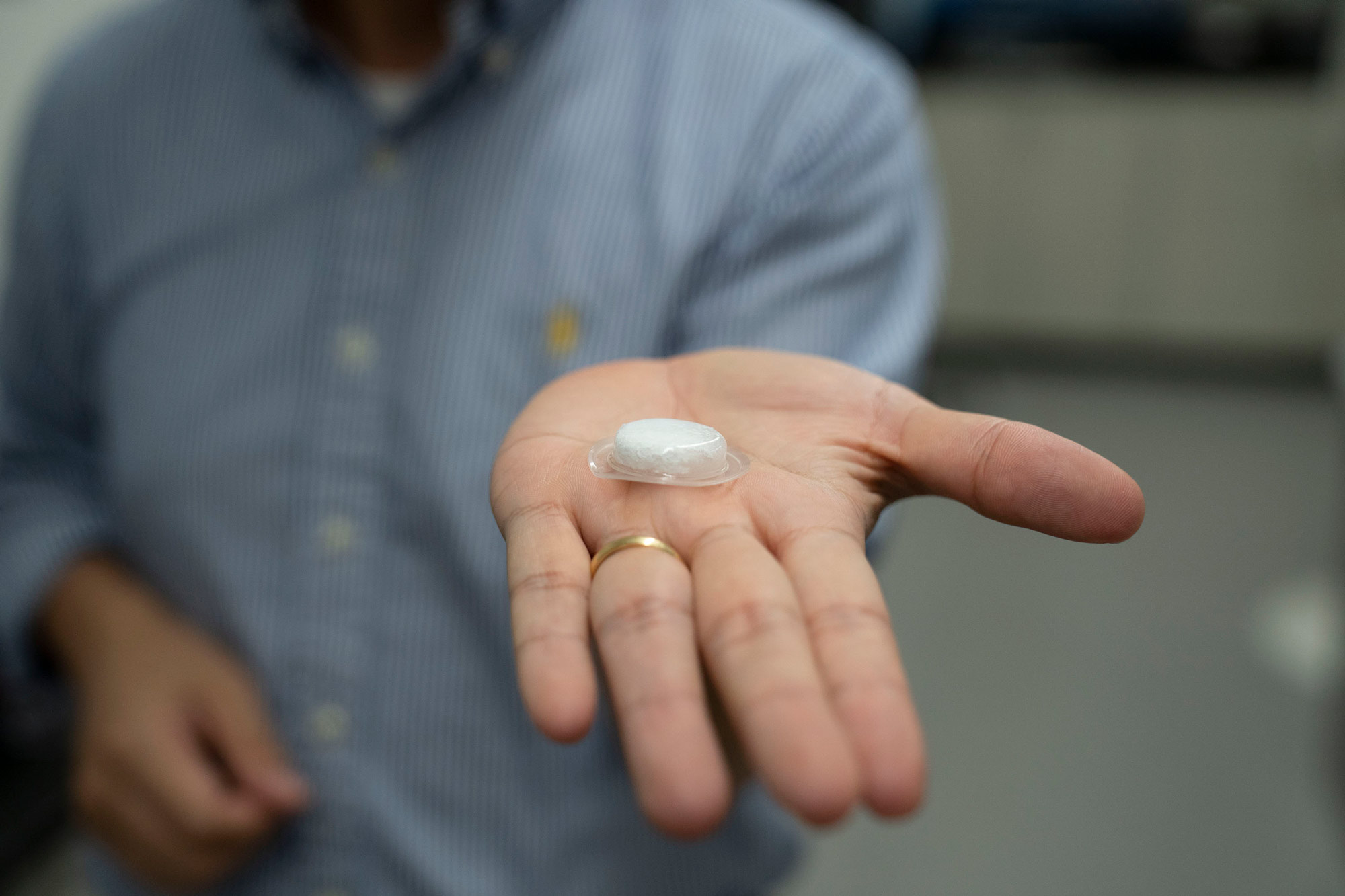Baoxing Xu admits he's not a big football fan. He enjoys the spectacle, though "I don't know that many rules," he said. But a material he helped design has the potential to greatly increase the safety of the players who participate in America's favorite sport.
It's called a "liquid nanofoam system," and it can be used for all sorts of padding, providing both mechanical flexibility and material softness. In one impact test, a sample of the material measuring an eighth of an inch thick outperformed a three-quarter-inch piece of the solid foam currently used in football helmets.
Backed by funding from the National Science Foundation, Xu, an associate professor of mechanical and aerospace engineering at the University of Virginia, and his team found that the material is more effective at absorbing and diffusing impacts than existing technology and retains its effectiveness despite being subjected to repeated blows.
To understand how it works, think of a sponge and water encased in a plastic skin, except that the sponge is coated in a material that repels water. When a force is applied - a blow from a hammer, or a big hit from a 250-pound blitzing linebacker - the water is forced into the sponge's cells, absorbing and dissipating the impact. When the force ceases, the cells push the water back out, and the whole system returns to its original shape.
In the current, dry-foam system used in football helmets, a forceful blow often leaves the padding permanently deformed and unsafe for reuse, Xu said.

Xu and his team have found many potential applications for their creation, from body armor to maritime uses to auto safety. (Photo by Dan Addison, University Communications)
The liquid nanofoam system is much more sophisticated than a sponge, working at a much tinier scale; the diameter of the pores is between 2 and 200 nanometers. (A nanometer is one-billionth of a meter.) "That creates a large amount of surface area, and for example, one gram of nanofoam could be unfolded into a whole area of typical [football] stadium," said collaborator Weiyi Lu, an associate professor of civil engineering at Michigan State University.
The water repellant technology applied to the nanopores is a silicone layer from an organic silyl chain. The liquid is not limited to water, and could be any ionized liquid, such as seawater, Xu said.
The research is promising enough to have drawn broad attention to a wide variety of potential applications across different scales in the near future, Xu noted - well beyond the football field.

The liquid nanofoam system retains its shape and structure even after repeated impacts. (Photo by Dan Addison, University Communications)
The liquid nanofoam system is dissipative enough and responds quickly enough to stop bullets, Xu said, making it a good candidate for use in body armor. It could help make autos safer. A coating of the sponge-like material on the hulls of ships could help mitigate the impact of waves, he said.
The team's research was published in July in the journal Advanced Materials, and also was selected into a "Rising Stars" series of outstanding research articles that aim to expand and reshape the scientific landscape.









